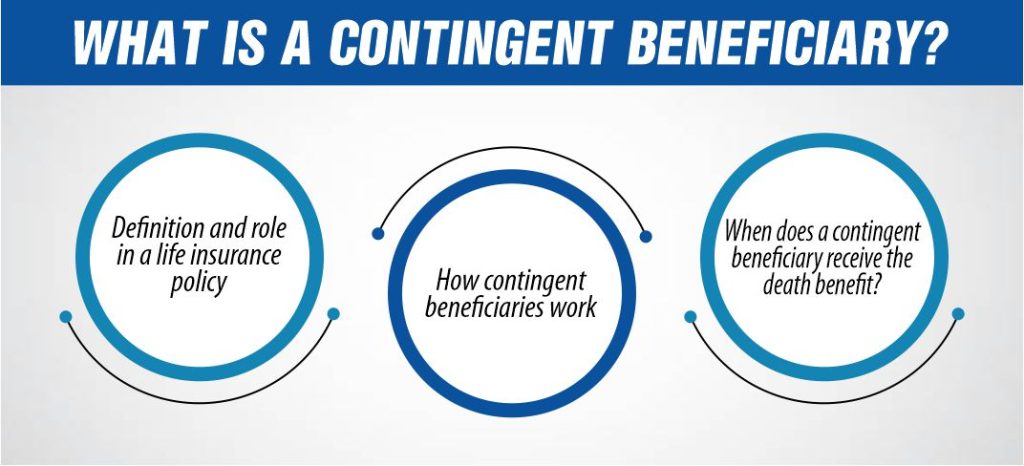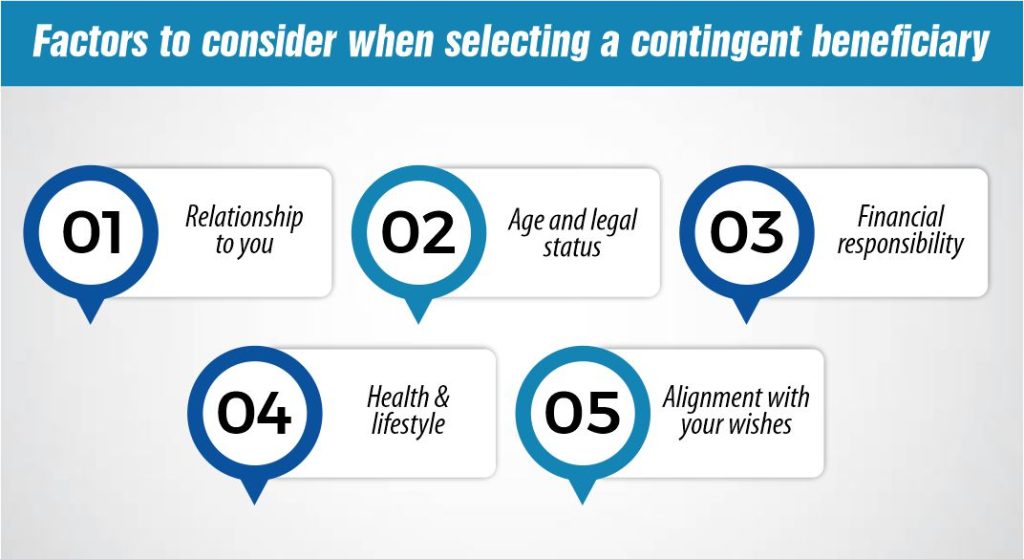Last Updated on: May 12th, 2025
Reviewed by Kyle Wilson

Planning for the future means preparing for the unexpected—and life insurance plays a key role in that. But what happens if your primary beneficiary can’t receive the death benefit? That’s where a contingent beneficiary in life insurance comes in. This often-overlooked detail in your life insurance policy could be the difference between a smooth payout and a legal mess. Whether you’re buying your first policy or reviewing an old one, understanding how contingent beneficiaries work can help protect your loved ones and give you peace of mind.
Get Free Quotes
Customized Options Await
Choosing the right beneficiary is one of the most important parts of setting up a life insurance policy. It determines who will receive the death benefit when you pass away, and how that money will be distributed. Whether you’re setting up a new policy or updating an existing one, understanding how beneficiaries work helps you avoid delays and ensures your wishes are honored.
A beneficiary is the person or entity you name to receive the payout, or death benefit, from your life insurance policy when you die. You can name one person, multiple people, a trust, a charity, or even your estate. Beneficiaries are the cornerstone of any life insurance contract because they ensure the money goes directly to someone you choose, rather than being tied up in legal proceedings or probate.
The primary beneficiary is the first in line to receive the insurance payout. However, if the primary beneficiary dies before you or is unable to claim the benefit, the money doesn’t automatically go to your next of kin. That’s where a contingent beneficiary comes in.
A contingent beneficiary—also called a secondary beneficiary—only receives the death benefit if the primary beneficiary can’t. This backup plan ensures your money still goes where you want it to, without court intervention.
For example, if you name your spouse as the primary and your adult child as the contingent, the child would receive the benefit only if your spouse has passed or is otherwise unable to claim the funds.
Beneficiaries can be classified as either revocable or irrevocable, depending on the level of control you want to maintain:
Understanding the difference between these types is key when naming both primary and contingent beneficiaries, especially if you want to maintain flexibility or need to meet legal obligations.
In life insurance, planning for the “what ifs” is just as important as choosing your primary beneficiary. A contingent beneficiary acts as a backup—someone who can still receive the policy’s death benefit if your first choice can’t. Including a contingent beneficiary helps you avoid unwanted delays, legal issues, or the benefit being passed to your estate by default.
A contingent beneficiary is the person or entity designated to receive the life insurance payout if the primary beneficiary is unable to collect the death benefit. This could happen if the primary beneficiary dies before the policyholder, refuses the money, or cannot be located.
By naming a contingent beneficiary in your life insurance policy, you’re ensuring that the benefit will still go to someone you trust, even if things don’t go as planned. It adds a layer of protection to your financial legacy and ensures your wishes are followed.
Contingent beneficiaries come into play only under specific circumstances. When a life insurance claim is filed, the insurer first checks if the primary beneficiary is eligible to receive the death benefit. If they are, the contingent beneficiary has no role. However, if the primary beneficiary has passed away or cannot claim the payout for any reason, the contingent life insurance beneficiary becomes next in line.
This designation gives policyholders more control over where their benefits go—and helps families avoid probate, court battles, and confusion during an already difficult time.
A contingent beneficiary receives the death benefit only if all primary beneficiaries are either deceased, disqualified, or unwilling to accept the money. In such cases, the insurance company will ask for proof (such as a death certificate or signed waiver) before releasing funds to the contingent.
This makes it essential to keep your beneficiary designations updated—especially after life events like marriage, divorce, or the passing of a loved one—so the right people receive the financial support you intended.

Naming a contingent beneficiary on your life insurance policy isn’t just a formality—it’s a smart and essential part of financial planning. It ensures that your death benefit reaches the right person, even if your primary beneficiary can’t accept it. Without a contingent in place, your money could end up in probate or with someone you didn’t intend to receive it.
A contingent beneficiary acts as a safety net to ensure your hard-earned life insurance benefits are passed on according to your wishes. Life is unpredictable—your primary beneficiary may pass away before you or may not be able to claim the benefit. By naming a contingent life insurance beneficiary, you’re protecting your family from unnecessary financial stress and making sure your assets support the people who matter most.
If both the primary beneficiary and contingent beneficiary are not named—or if neither is able to accept the benefit—your life insurance payout may go to your estate. This often means the money must go through probate, a legal process that can be expensive, slow, and emotionally draining for your loved ones.
Designating a clear contingent beneficiary helps avoid these complications. It ensures a smoother, faster payout and keeps your life insurance outside of probate court, where your wishes may be delayed or challenged.
Many people overlook the importance of contingent beneficiaries or make avoidable errors that complicate the payout process. Here are some key mistakes to watch for:
By avoiding these mistakes and clearly naming a contingent beneficiary, you safeguard your legacy and help your family avoid financial and legal challenges later.
Choosing a contingent beneficiary is a key part of setting up or reviewing your life insurance policy. While it may seem straightforward, this decision carries long-term financial and legal consequences. Taking the time to make a thoughtful choice—and keeping it updated—can protect your loved ones and ensure your intentions are honored without complications.
When selecting a contingent beneficiary, consider both personal and practical factors:
These considerations can help you make a choice that not only honors your relationships but also secures the life insurance benefit in the most efficient way.

Yes, you can name multiple contingent beneficiaries—and it’s a smart move if you want to divide the benefit among several people or create a backup plan with more than one option.
When naming multiple contingent beneficiaries, you’ll need to specify how the death benefit should be divided. Common distribution options include Per capita and Per Stirpes:
Be clear and specific in your beneficiary designation form to avoid confusion or delays. You can also assign percentages (e.g., 50/50 or 70/30) depending on your preferences.
Life changes—and your life insurance policy should reflect that. Failing to update your beneficiary designation after major events like marriage, divorce, the birth of a child, or the death of a previous beneficiary can lead to unintended outcomes.
Here’s how to keep your contingent beneficiary information up to date:
Keeping your beneficiary information current ensures that your death benefit is distributed according to your true wishes—and helps your loved ones avoid legal issues during a difficult time.
Naming a contingent beneficiary in your life insurance policy is a simple yet powerful way to ensure that your death benefit reaches the right person, even if the unexpected happens. This backup plan adds security and peace of mind, knowing that your wishes will be honored even if your primary beneficiary is unable to claim the benefit.
By understanding the importance of contingent beneficiaries, considering your options carefully, and regularly reviewing your policy, you can avoid complications and ensure your loved ones are taken care of.
Yes, a minor can be named as a contingent beneficiary, but there are important considerations. If you name a minor, the life insurance company will not pay the death benefit directly to them. Instead, the money may be held in a trust or managed by a legal guardian until the child reaches adulthood.
If both the primary and contingent beneficiaries pass away before the policyholder, the life insurance payout typically goes to the policyholder’s estate. In this case, the death benefit may be subject to probate, which could delay the distribution of funds.
No, contingent beneficiaries are not typically notified by the life insurance company unless they are required to claim the benefit. The primary beneficiary will generally be the first to be contacted by the insurer.
Senior Writer & Licensed Life Insurance Agent
Iqra is a dynamic and insightful senior writer with a passion for life insurance and financial planning. With over 8 years of hands-on experience in the insurance industry, Iqra has earned a reputation for delivering clear, actionable advice that empowers individuals to make informed decisions about their financial future. At Burial Senior Insurance, she not only excels as a licensed insurance agent but also as a trusted guide who has successfully advised over +1500 clients, helping them navigate the often complex world of life insurance and annuities. Her articles have been featured in top-tier financial publications, making her a respected voice in the industry.

Burial Senior Insurance provides information and services related to burial insurance for senior citizens, including policy options and end-of-life support services.
Copyright © Burial Senior Insurance 2025. All Right Reserved.